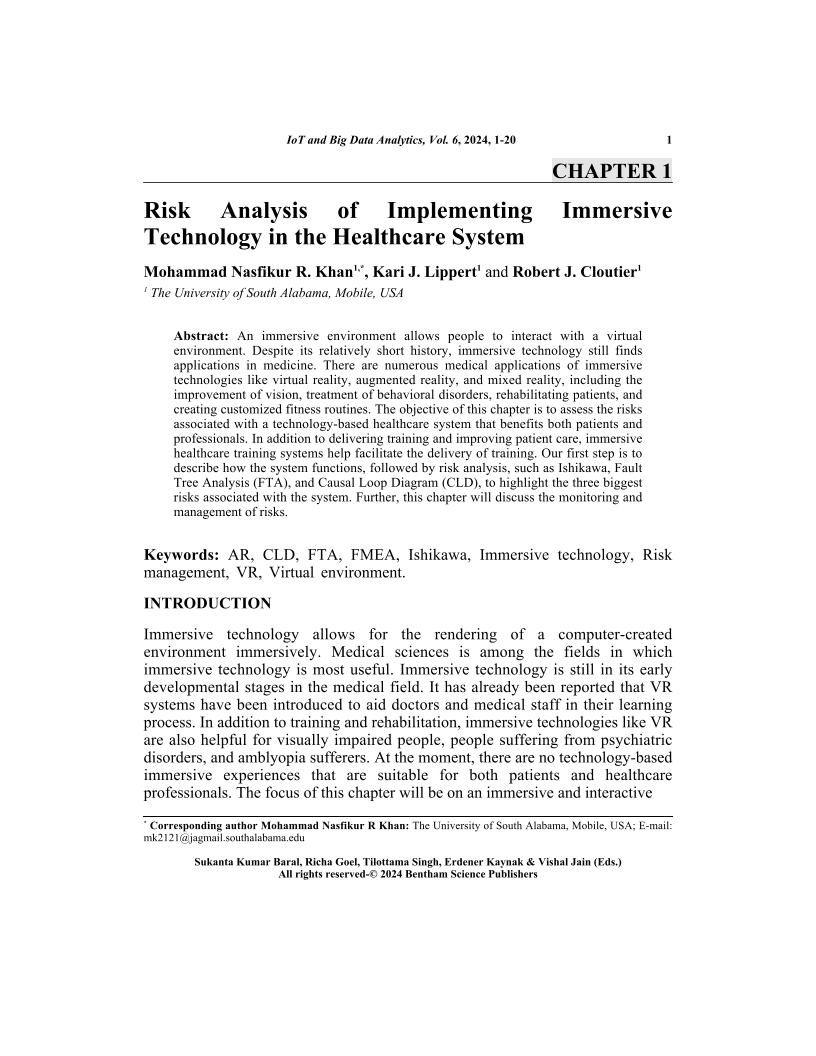Risk Analysis of Implementing Immersive Technology in the Healthcare System

- Authors: Mohammad Nasfikur R. Khan1, Kari J. Lippert2, Robert J. Cloutier3
-
View Affiliations Hide Affiliations1 The University of South Alabama, Mobile, USA 2 The University of South Alabama, Mobile, USA 3 The University of South Alabama, Mobile, USA
- Source: Changing Competitive Business Dynamics Through Sustainable Big Data Analysis , pp 1-20
- Publication Date: July 2024
- Language: English
Risk Analysis of Implementing Immersive Technology in the Healthcare System, Page 1 of 1
< Previous page | Next page > /docserver/preview/fulltext/9789815256659/chapter-1-1.gif
An immersive environment allows people to interact with a virtual environment. Despite its relatively short history, immersive technology still finds applications in medicine. There are numerous medical applications of immersive technologies like virtual reality, augmented reality, and mixed reality, including the improvement of vision, treatment of behavioral disorders, rehabilitating patients, and creating customized fitness routines. The objective of this chapter is to assess the risks associated with a technology-based healthcare system that benefits both patients and professionals. In addition to delivering training and improving patient care, immersive healthcare training systems help facilitate the delivery of training. Our first step is to describe how the system functions, followed by risk analysis, such as Ishikawa, Fault Tree Analysis (FTA), and Causal Loop Diagram (CLD), to highlight the three biggest risks associated with the system. Further, this chapter will discuss the monitoring and management of risks.
-
From This Site
/content/books/9789815256659.chapter-1dcterms_subject,pub_keyword-contentType:Journal -contentType:Figure -contentType:Table -contentType:SupplementaryData105

